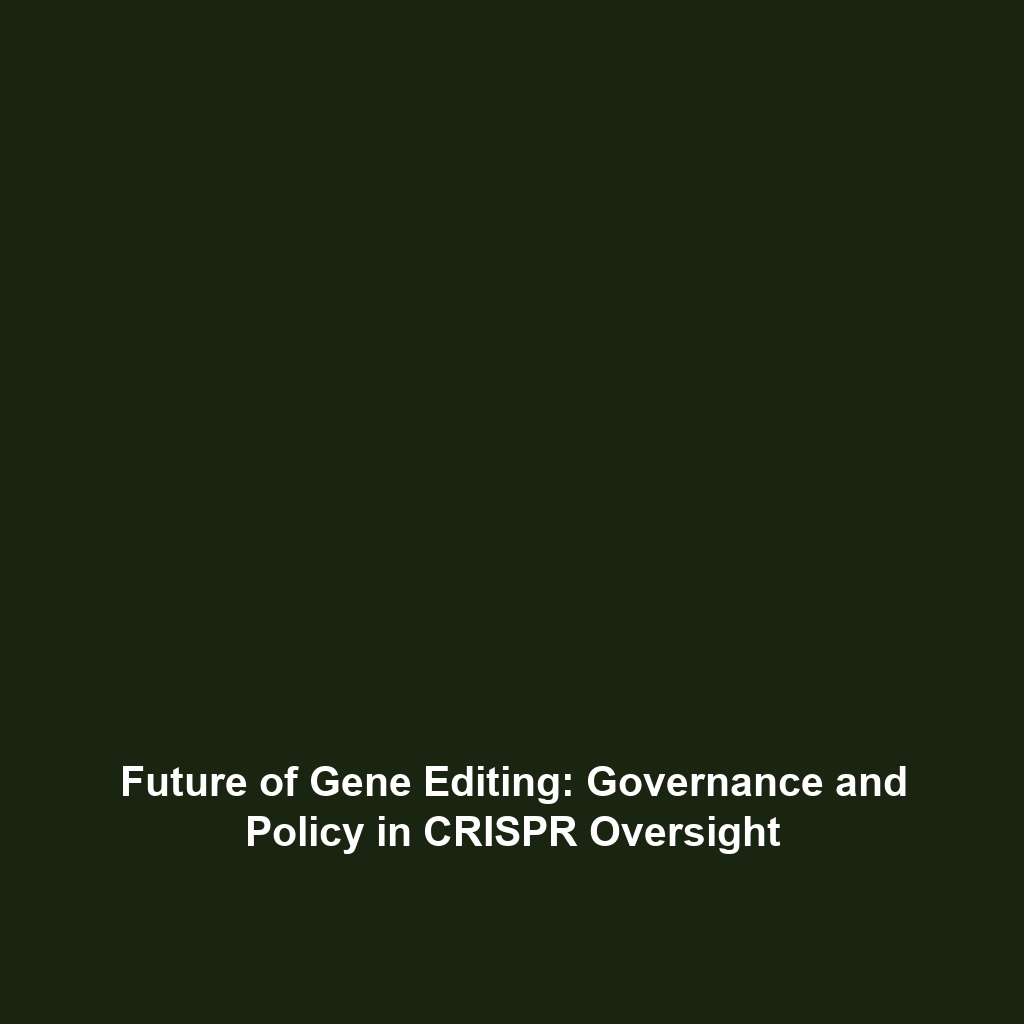Advances in CRISPR and Other Gene-Editing Technologies as Potential Tools for Curing Genetic Disorders
Introduction
The emergence of CRISPR and other gene-editing technologies represents a pivotal advancement in genetic research and therapeutic options, particularly concerning genetic disorders. These innovative tools have the potential to transform the landscape of medicine, significantly impacting the efforts initiated by the Human Genome Project. Through precise gene-editing capabilities, scientists are now closer to developing effective treatments for various debilitating conditions, showcasing the relevance of CRISPR in the quest to understand and modify the human genome.
Key Concepts
Understanding CRISPR and Gene Editing
Gene-editing technologies, particularly CRISPR (Clustered Regularly Interspaced Short Palindromic Repeats), utilize a natural defense mechanism in bacteria to target and modify strands of DNA. This process allows for the removal, addition, or alteration of genetic material with unparalleled precision.
Human Genome Project Framework
The Human Genome Project has laid the groundwork for understanding genetic variations and the underlying causes of genetic disorders. Advances in CRISPR complement this foundation, offering practical applications for rectifying genetic anomalies. The interaction between gene-editing technologies and the comprehensive mapping of the human genome enhances our ability to diagnose, treat, and potentially cure genetic illnesses.
Applications and Real-World Uses
The applications of CRISPR and gene-editing technologies in addressing genetic disorders are numerous and impactful. Here are some of the most significant real-world uses:
- Targeted Gene Therapy: CRISPR is being used in clinical trials to target and correct mutations associated with diseases like sickle cell anemia and cystic fibrosis.
- Developing Animal Models: It has enabled the creation of animal models that mimic human genetic disorders, accelerating research and drug development processes.
- Potential in Oncology: Gene editing shows promise in altering cancerous cells or enhancing the immune response against tumors.
Current Challenges
Despite the remarkable potential of CRISPR and other gene-editing technologies, several challenges hinder their broader application. These include:
- Off-Target Effects: Unintended modifications may occur, leading to potential side effects and safety concerns.
- Ethical Considerations: Manipulating the human germline raises ethical questions about long-term implications and the definition of normal genetics.
- Regulatory Hurdles: The regulatory environment surrounding gene editing remains complex, limiting research and clinical trials.
Future Research and Innovations
The future of CRISPR and gene-editing technologies is bright, with ongoing innovations expected to address current limitations. Key areas of research include:
- Next-Generation CRISPR: Improvements in specificity and efficiency will enhance safety and efficacy.
- Gene Editing Delivery Systems: Advancements in how CRISPR components are delivered to target cells will improve treatment accessibility.
- Ethical Framework Development: Establishing ethical guidelines will help navigate the implications of gene-editing technologies in human health.
Conclusion
Advances in CRISPR and other gene-editing technologies hold transformative potential for curing genetic disorders, significantly complementing the goals established by the Human Genome Project. As research progresses, addressing challenges and enhancing applications will further define the future of genetic medicine. Individuals interested in understanding these advancements should stay informed and engaged with ongoing research. For more related information, visit our pages on Gene Therapy and Genetic Disorders.


